Professional Garden Design: Common Questions Answered
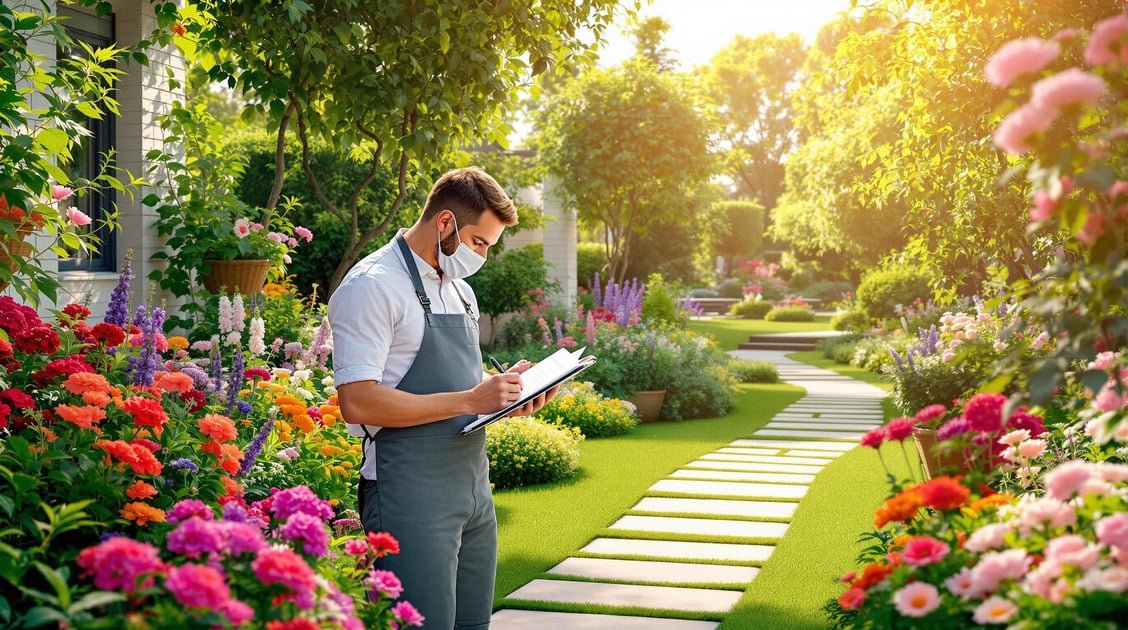
Hiring a professional garden designer can transform your outdoor space into a functional and beautiful area while increasing your property value by up to 15%. Here's what you need to know:
- Services Offered: Designers handle consultations, master plans, hardscape designs, and even remote services. Costs range from $100/hour for consultations to $1,200 for full garden plans.
- Costs: Typical projects cost between $1,960 and $7,220, with larger designs reaching $15,000. Budget 5–10% of your home's value for garden design.
- AI Tools: Tools like AIGardenPlanner use AI to create tailored designs, suggest plants, and save time. Plans start at $19/month.
- Trends: Current trends focus on native plants, water conservation, and eco-friendly designs with smart technology like irrigation systems.
Quick Comparison:
| Feature | Traditional Design | AI-Assisted Design |
|---|---|---|
| Time to Design | Days or weeks | Minutes |
| Cost | $1,960–$7,220 (average) | $19/month (AI tools) |
| Plant Selection | Designer’s expertise | AI database |
| Sustainability Options | Limited | Integrated suggestions |
Professional garden design blends expertise with modern tools for stunning, low-maintenance gardens.
Professional Garden Design Services
Core Design and Installation Services
Professional garden designers specialize in turning outdoor spaces into well-planned, functional areas. Take MW_hite_design, for instance - they handle everything from initial consultations to complete garden installations.
Here’s a breakdown of typical services and costs:
| Service Type | Description | Starting Cost |
|---|---|---|
| Initial Consultation | On-site evaluation and discussion of needs | $100/hour |
| Design Consultation | Detailed planning and concept development | $150/hour |
| Master Plans | Full front and rear garden design | $1,200 |
| Specific Area Design | Focused designs for areas like vegetable gardens | $500 |
| Hardscape Design | Plans for walls, fencing, and patios | $500 |
| Remote Services | E-design plans and virtual consultations | $500–$1,500 |
"Having a Master Plan to follow whether the installation is done immediately or over the course of a few years will save you from costly mistakes as well as create a cohesive flow throughout your landscape." - MW_hite_design
These services provide a structured approach to creating outdoor spaces that blend beauty with functionality.
Advantages of Hiring a Professional
Hiring a professional designer brings a range of benefits that DIY efforts often can’t match. Here’s how they make a difference:
- Maximized Space: Professionals create distinct zones or 'rooms' in your garden, making even small spaces feel larger and more functional.
- Smart Plant Choices: They select plants that thrive in your local environment, often at better prices.
- Future-Proofing: Designers account for plant growth, seasonal changes, and maintenance needs, ensuring your garden looks great for years.
"Through my training and expertise, I reveal your outdoor space's potential and guide you to a garden that remains appealing over time." - Jayne Anthony, Jayne Anthony Garden Design
Garden Design Costs
Price Ranges and Key Factors
The cost of garden design depends on the scale and complexity of the project. On average, homeowners in the US spend about $4,590 on landscape design services, with most projects ranging between $1,960 and $7,220. For more elaborate plans that include custom features, expenses can go as high as $15,000.
Here’s a breakdown of typical design fees:
| Design Service Type | Cost Range | Description |
|---|---|---|
| Basic Design (per sq ft) | $5 – $10 | Simple layouts with basic plant selection |
| Intermediate Design | $5 – $15 | Includes additional features and custom elements |
| Full-Scale Design | $15 – $45 | Detailed, comprehensive plans |
| Hourly Consultation | $50 – $150 | Expert advice and initial planning |
| Initial Site Visit | $50 – $80 | Property assessment and basic recommendations |
Several factors influence these costs:
- Property Size: Residential garden design typically costs $0.05 to $0.15 per square foot.
- Designer Expertise: Experienced professionals charge higher rates.
- Seasonal Demand: Spring and summer projects often come with higher price tags due to increased demand.
- Project Complexity: Features like water installations or custom structures add to the cost.
- Site Conditions: Difficult terrain or limited access can increase expenses.
"Your garden designer can either work to a strict maximum budget or provide ideas based on different budget options. It's also common to develop a garden in stages, allowing the space to mature over time." – Design for Me
Money-Saving Design Options
Thoughtful planning can help you save money without compromising quality. Experts suggest allocating 5–10% of your home's value for garden design, which can increase property value by up to 15%.
Using tools like AIGardenPlanner can simplify your project while staying within budget. Their Starter plan, priced at $19 per month, offers features like AI-powered layout suggestions and tailored plant recommendations.
Here are some cost-saving tips:
- Phased Development: Spreading out the project over time reduces upfront costs.
- Native Plants: Choosing local species lowers maintenance and water usage.
- Smart Materials: Using durable, low-maintenance hardscaping materials can cut long-term expenses.
- Plant-Centric Projects: Focusing on plants costs around $3.60 per square foot on average.
For smaller projects, designers usually charge about 20% of the total budget, while larger projects may see fees drop to 10–15%.
AI Tools in Garden Design
AI Design and Plant Selection Features
AI is changing the way garden designs come to life, offering quick access to professional-quality layouts. These tools analyze factors like site conditions, climate, and personal preferences to create tailored garden plans in no time.
Here’s what they bring to the table:
- Photo-Based Design: Upload clear, multi-angle photos to generate visual layouts.
- Climate-Smart Planning: Get recommendations tailored to your local growing zone.
- Style Customization: Pick from a range of garden styles and themes.
- Plant Selection: Receive plant suggestions that fit your garden’s unique conditions.
For example, AIGardenPlanner’s AI Plant Advisor provides detailed growing guides and maintenance schedules based on your specific location and gardening needs. This approach blends speed and precision, complementing traditional design methods with personalized, professional-grade results.
"AI garden planning still has a lot to learn, but with so much information available, I would not be surprised if this quickly becomes a powerful tool for gardeners, especially beginners." - Lois Miklas, LNP | LancasterOnline's Master Gardener columnist
Using AIGardenPlanner for Design Projects
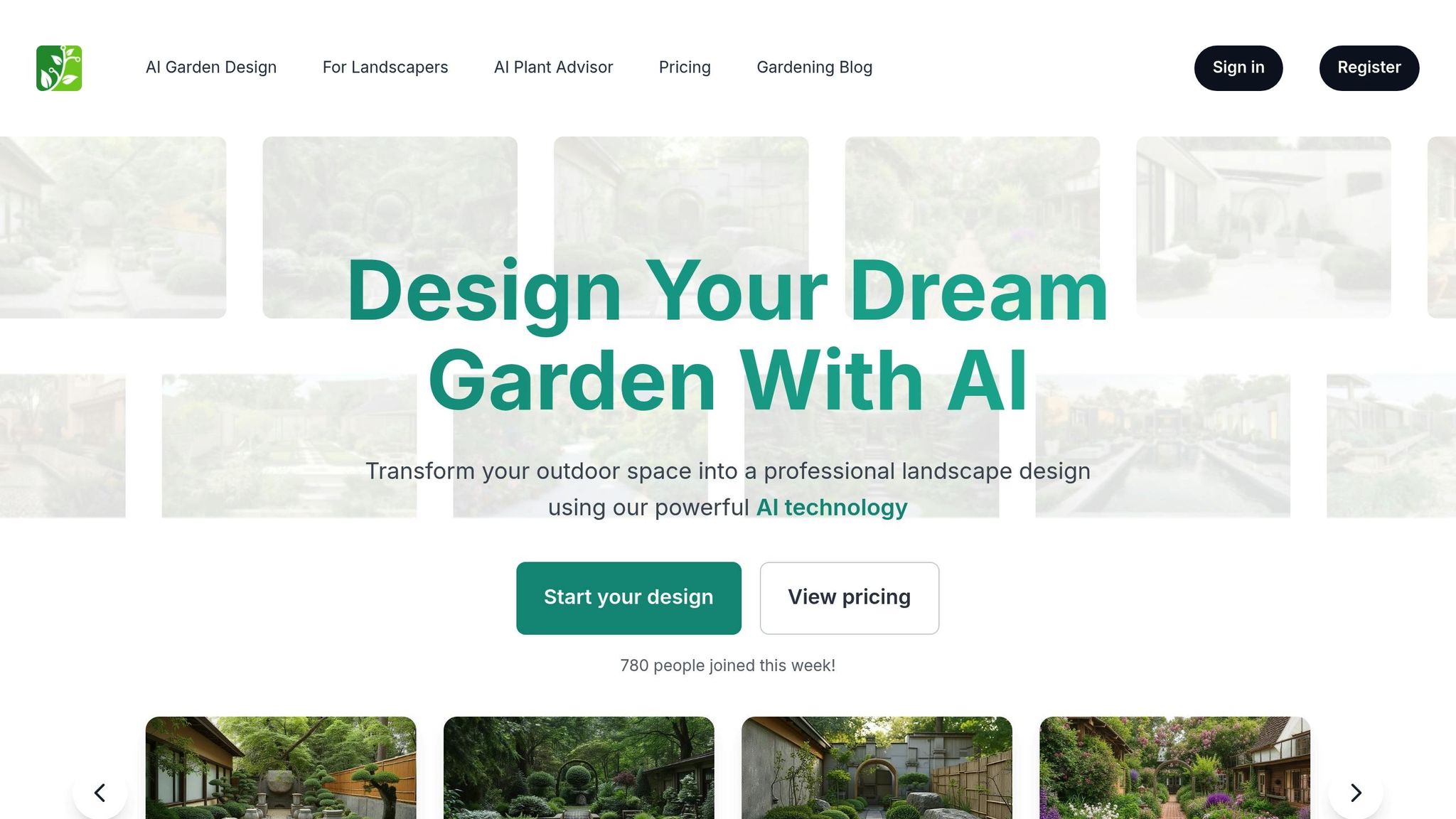
AIGardenPlanner offers more than 50 garden styles and delivers high-resolution designs you can download or share with clients.
To get the best results:
- Upload clear, multi-angle photos of your garden space.
- Outline your preferred style, maintenance level, budget, and plant choices.
- Explore features for professionals, such as commercial licensing, multi-project management, priority support, and custom style options.
These steps make it easier to cut down on design revisions and keep project costs under control.
"Don't spend weeks looking for the right home design or idea. Visualize it in a matter of seconds!" - GardenComposer
sbb-itb-4d6a8dd
🚀 Ready to Reinvent Your Garden?
Join thousands of homeowners who have transformed their gardens using our AI design tool. Upload one photo to explore endless possibilities.
Get your AI garden designs →How much should you pay for a landscape designer? ~ Tips ...

Current Garden Design Trends
Building on the earlier discussion of design costs and AI-powered tools, current garden trends emphasize refined aesthetics and eco-conscious practices.
Modern Garden Styles
In 2025, garden design blends practicality with natural beauty. Designers are moving away from traditional, manicured lawns and embracing native plants and hybrids, creating gardens that are both wildlife-friendly and environmentally responsible.
"Replacing lawn with low-water plants in drought-prone areas is not a new idea. What is new is that designers and gardeners are moving beyond succulents and rock gardens and recognizing that any garden style can be reinterpreted with a lower-water palette. My clients are excited to learn they can have the flower-filled cottage garden they crave while still using water responsibly. Incorporate shrubs like grevillea and blue hibiscus, and perennials like yarrow, catmint, and kangaroo paw for a long season of colorful blooms." - Susan Morrison, landscape designer with Creative Exteriors Landscape Design
Key elements shaping modern garden styles include:
- Planting schemes that resemble natural landscapes
- Pathways with relaxed, informal edges
- Mixed-height arrangements for added depth and visual appeal
- Cozy seating areas integrated into the design
- Artful use of drought-tolerant plants for vibrant displays
These trends align seamlessly with AI-assisted planning tools, combining visual charm with practical, eco-friendly solutions.
Eco-Friendly Design Methods
Sustainability has become a cornerstone of contemporary garden design. Andrew Jager of Walters Gardens highlights the growing interest in native plants:
"From the industry perspective, native plants and the conversation about the utility of native plants continues to be a hot topic. We probably get the most requests from our customers for literature, messaging, and information on this topic."
Here are some sustainable practices shaping the industry:
| Practice | Impact | Implementation |
|---|---|---|
| Water Conservation | Cuts water usage by up to 50% | Smart irrigation and rainwater systems |
| Native Plantings | Boosts biodiversity | Choosing species native to the region |
| Chemical-Free Methods | Improves soil quality | Organic fertilizers and natural pest control |
| Living Fences | Supports wildlife corridors | Planting mixed hedges |
These methods naturally align with emerging technologies, offering practical ways to manage gardens sustainably.
Garden Technology Integration
Technology is transforming how gardens are designed and maintained. Smart tools are helping homeowners achieve both efficiency and sustainability. For instance, smart irrigation systems reduce water waste while ensuring plants stay healthy.
Popular tech solutions include:
- Smart Irrigation: Systems that adjust watering schedules based on live weather updates
- Plant Health Monitors: Sensors that measure soil moisture, sunlight, and temperature
- Voice-Controlled Features: Integration with smart home systems for lighting and irrigation
- Solar-Powered Elements: Eco-friendly lighting and water features
These innovations make it easier for homeowners to maintain their gardens while supporting environmentally friendly practices.
Conclusion
Garden design is evolving with the integration of AI, merging time-tested expertise with advanced technology for quicker and more customized results.
Today’s designs focus on eco-friendliness, water efficiency, and low-maintenance aesthetics. Tools like AIGardenPlanner support these priorities by offering tailored solutions for individual spaces, reflecting the shift toward smarter, tech-driven garden planning.
Here’s a quick comparison of traditional and AI-assisted design benefits:
| Feature | Traditional Approach | AI-Assisted Approach |
|---|---|---|
| Time to Design | Days or weeks | Just minutes |
| Plant Selection | Limited to designer's knowledge | Comprehensive database with location-specific options |
| Style Variety | Dependent on designer’s availability | Access to 50+ garden styles |
AIGardenPlanner’s AI Plant Advisor takes it a step further by providing climate-specific plant recommendations, along with detailed guides for growth and care.
"Experience garden design reimagined - straightforward, lightning-fast, and user-friendly. Perfect for anyone seeking quick inspiration and professional results." - AIGardenPlanner
Whether you’re a homeowner or a professional, combining AI-driven insights with established design principles offers a modern, efficient way to create stunning outdoor spaces.
Related posts
Related Articles

Ultimate Guide to Winter Wildlife Gardening
Transform your garden into a wildlife sanctuary this winter by providing essential food, water, and shelter for birds and small mammals.
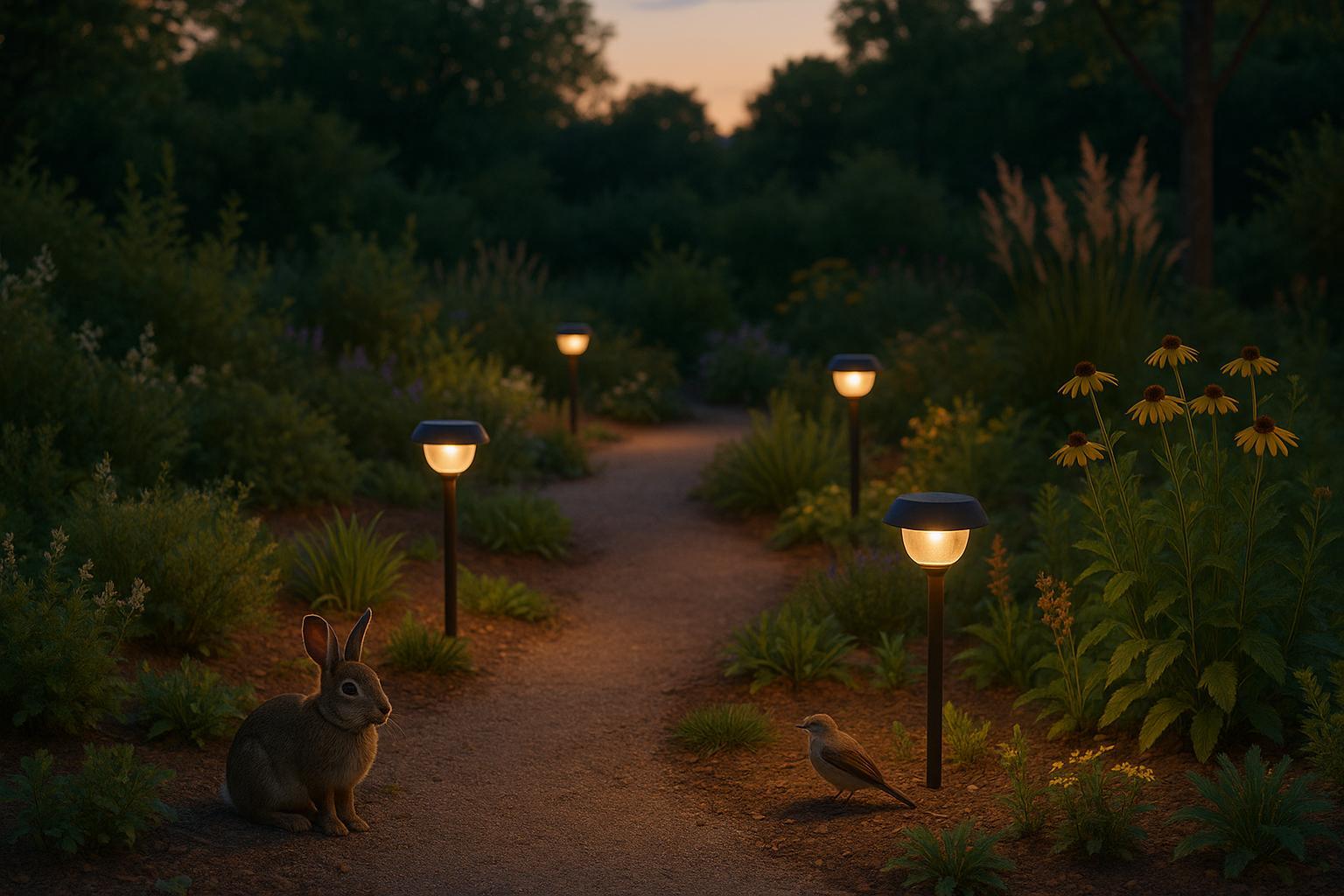
Solar Lighting and Wildlife-Friendly Gardens
Learn how solar lighting enhances garden beauty while protecting wildlife, minimizing light pollution, and supporting local ecosystems.
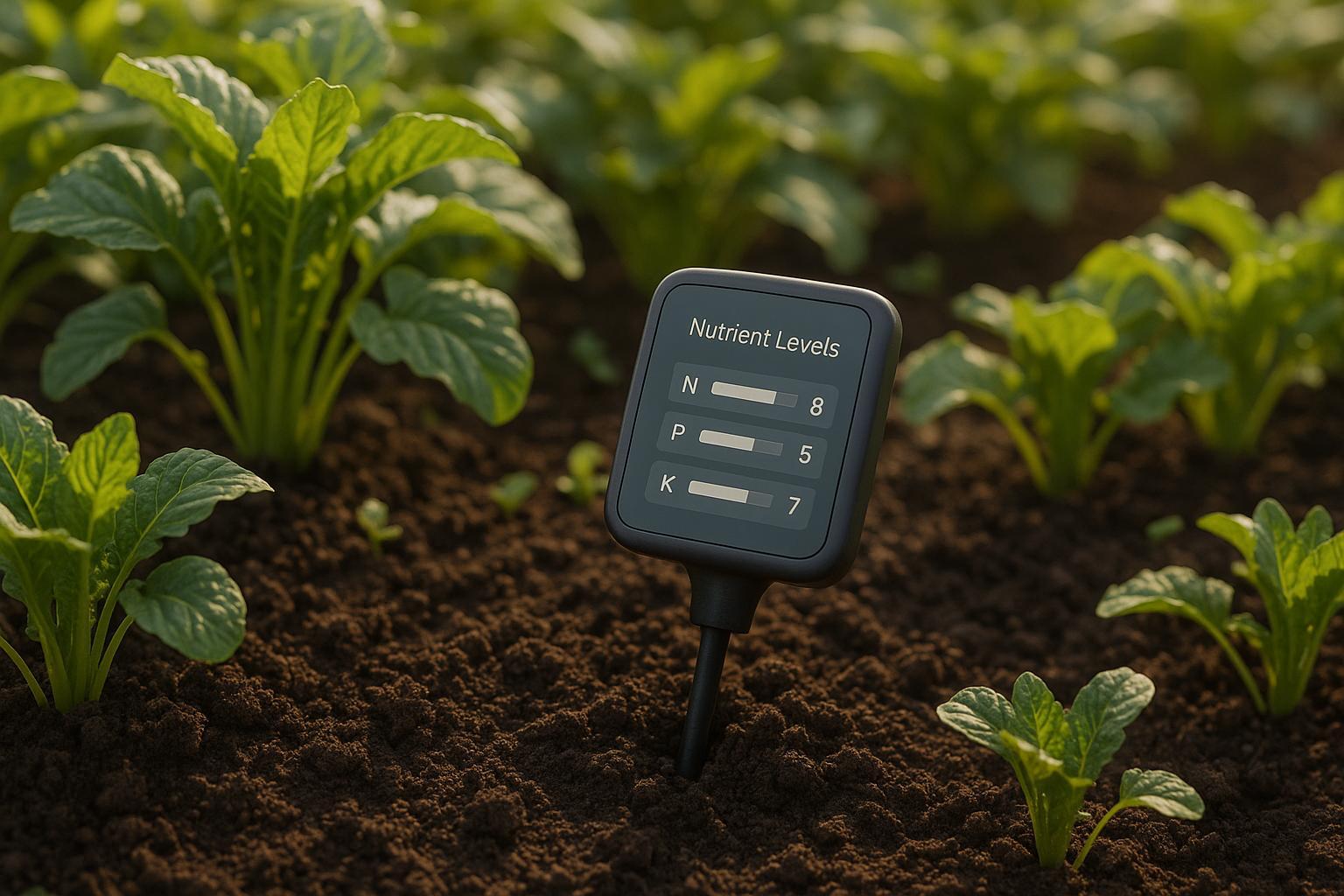
Real-Time Nutrient Monitoring: Benefits for Gardeners
Explore how real-time nutrient monitoring enhances plant care, ensuring healthier growth, cost savings, and timely interventions for gardeners.
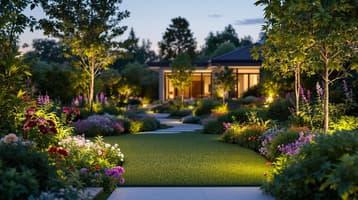
Ultimate Guide to Smart Garden Lighting Setup
Learn how to enhance your outdoor space with smart garden lighting through effective planning, installation, and automation techniques.

AI Garden Styles for Every Season
Transform your garden throughout the year with tailored seasonal designs and plant recommendations based on local climate conditions.
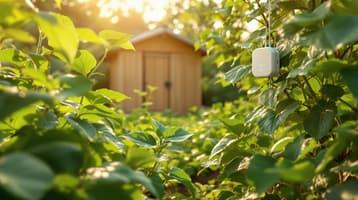
IoT Security for Garden Sensors: Key Features
Learn how to secure your IoT garden sensors with encryption, access controls, and network protection to safeguard your garden's data.